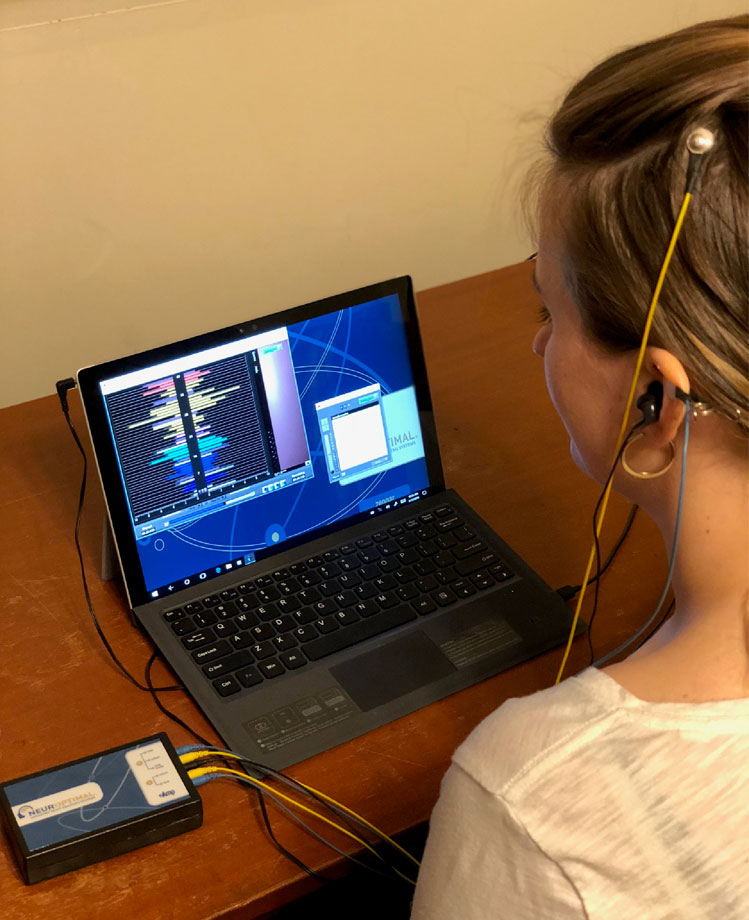
Neurofeedback works by promoting this activity in specific areas affecting your capability to arrange thought, concentrate effort, and control emotion. Neurofeedback has actually proven to be efficacious in dealing with people struggling with: ADD/ADHD Depression Distressing brain injury Post-traumatic tension disorder Sensory defense and sensory integration conditions Mood swings, irritability Stress and anxiety Sleep disorders, sleeping disorders, uneasy leg syndrome Knowing Disabilities (dyslexia, dysgraphia, dyscalculia) Executive operating problems Headaches, migraines In addition, neurofeedback also might assist individuals to: Gain control over feelings Develop more powerful memory retention Increase ability to focus mentally and physically Boost performance in sports and other exercises Deal more successfully with performance stress and anxiety (e.g., tests, public speaking, high-pressure scenarios) Accomplish a better sense of basic well-being.
Knowing Disorder Electroencephalogram Biofeedback for Reading Special Needs and Terrible Brain Injury by Thornton KE Ph. D. and Carmody DP Ph. D. Reading disabilities present significant challenges to the instructional system. The estimated frequency rate for discovering specials needs is 15% of the student population, with 6.5 million kids requiring unique education in 2002.
Between 28% and 43% of prisoners in adult reformatories need special education (versus 5% in typical population), and 82% of prison prisoners in the United States are school dropouts. check out complete text (PDF) Research Papers Post WISC-R and TOVA improvement with QEEG assisted neurofeedback training in mentally retarded: a scientific case series of behavioral problems (abstract) by Surmeli T, Ertem A.

Neurofeedback Can Be Fun For Everyone
In pilot work, we have actually seen favorable scientific effects of Neurofeedback (NF) used to kids with Trisomy 21 (Down Syndrome) and other kinds of psychological retardation. Considered that lots of clinicians utilize NF in Attention Deficit Hyperactivity Condition and Generalized Knowing Special needs cases, we studied the results of a scientific case series utilizing Quantitative EEG (QEEG) directed NF in the treatment of mental retardation.
The QEEG data for many subjects had increased theta, alpha, and coherence abnormalities. read full text Effect of SMR-Beta Training on Neurocognitive Efficiency by Kaiser D Ph. D. One-hundred and 2 school-aged kids (28 woman, 74 male) with attentional problems (impulsive, inattentive, and/or hyperactive) got involved in this research study. Thirty-two were plainly identified with ADHD/ADD.
Characteristically, the intake criteria were generous. Almost half of the kids displayed discovering impairments, Conduct Disorder, or ODD comorbid conditions. check out complete text (DOC) Neurofeedback for Elementary Trainees with Determined Learning Issues (abs. pg. 4) by Orlando PC Ph. D. and Rivera RO B.S. The objective of this research was to ascertain whether basic reading, checking out comprehension, the reading composite, and IQ scores could be improved utilizing neurofeedback.

4 Simple Techniques For Brain Mapping
Control and experimental groups were picked at random. read complete text (PDF) EEG and Behavioral Changes Following Neurofeedback Treatment in Learning Handicapped Children (abs.) by Fernández T, Herrera W, Consistency T, DÃaz-Comas L, Santiago E, Sánchez L, Bosch J, Fernández-Bouzas A, Otero G, Ricardo-Garcell J, Barraza C, Aubert E, Galán L, Valdés R Neurofeedback (NFB) is an operant conditioning procedure, by which the subject discovers to manage his/her EEG activity. In all subjects who attained dependable control of left-hemispheric brain actions, substantial adjustment of data processing was observed. read complete text EEG Sensorimotor Rhythm Biofeedback Training: Some Results on the Neurologic Precursors of Learning Disabilities (abs.) by Tansey MA This research study provides a clinical treatment program for pathological interhemispheric dysfunction with regard to a population of learning disabled kids.
read full text EMG and EEG Biofeedback Training in the Treatment of a 10-year-old Hyper Boy with a Developmental Checking out Disorder (abs.) by Tansey MA and Bruner RL The serial application of electromyographic (EMG) and sensorimotor (SMR) biofeedback training was attempted with a 10-year-old young boy presenting a triad of signs: an attention deficit condition with hyperactivity, developmental reading disorder, and ocular instability.
read full text The Result of Training Distinct Neurofeedback Protocols on Aspects of Cognitive Efficiency (abs.) by Vernon D, Egner T, Cooper N, Compton T, Neilands C, Sheri A, Gruzelier J Using neurofeedback as an operant conditioning paradigm has actually disclosed that participants have the ability to gain some control over specific elements of their electroencephalogram (EEG).
more info